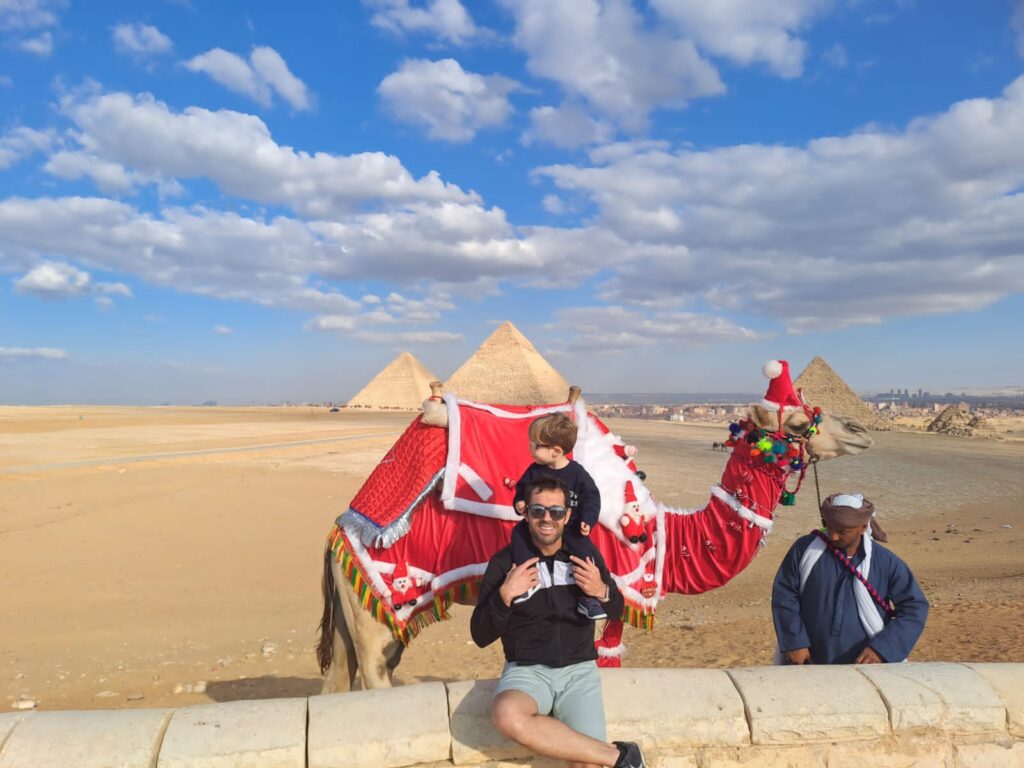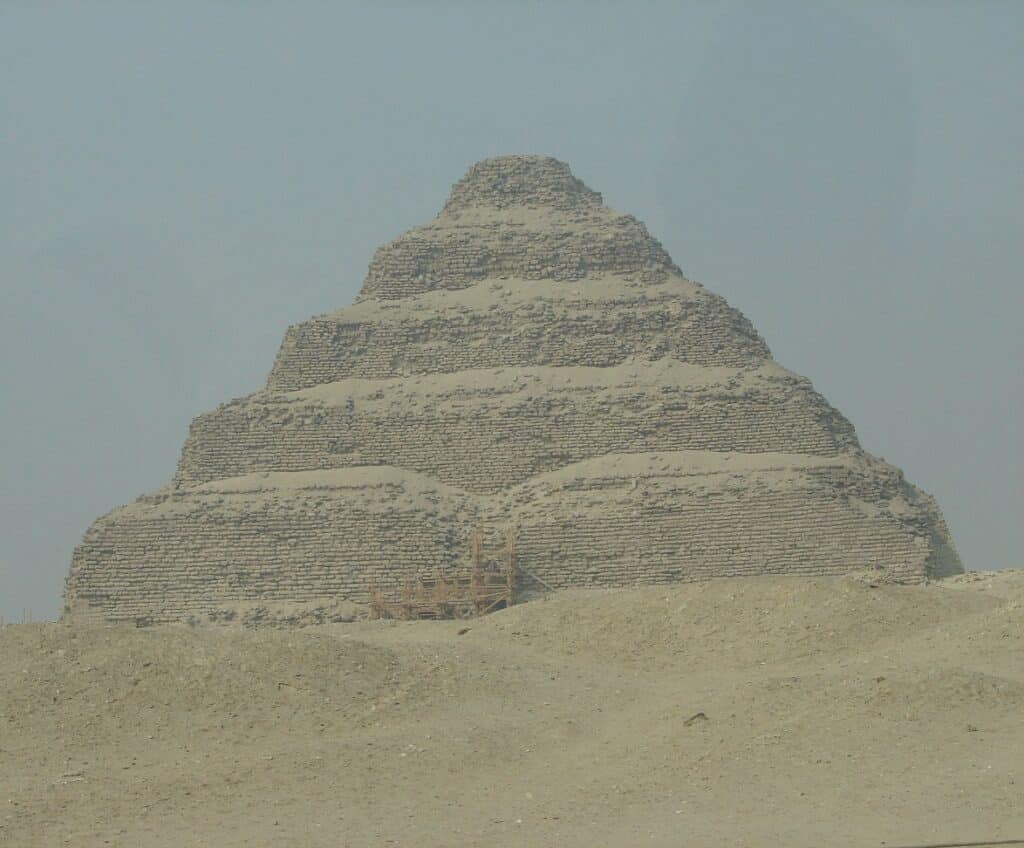

Explore the awe-inspiring Giza Pyramids, the Sphinx, and hidden temples. This definitive guide covers the history, engineering secrets, and the new Grand Egyptian Museum. Plan your visit with My Egypt Travel. 
🌄 Giza: Where Human Ambition Met Eternity

Giza is not merely a collection of colossal structures; it is the genesis point of human monumental aspiration. For the American and European traveler, the first sight of the Pyramids—even from a distance—is a moment of pure, unqualified awe. Yet, to truly appreciate the Giza Plateau, one must move beyond the sheer scale and delve into the context, the mythology, and the profound engineering mystery that defines this UNESCO World Heritage site.
This guide, crafted by the experts at My Egypt Travel, moves past the postcards to explore the Plateau as a carefully curated ancient spiritual landscape—a place where the Pharaohs secured their immortality, and where history continues to unfold.
The Scale of Silence: A Non-Conventional Approach
The Pyramids’ true genius lies not just in their construction, but in their intentional location. Strategically placed on the desert edge of the Nile Valley, they represent the transition from life (the green valley) to the afterlife (the western desert, where the sun sets). Our approach ensures you experience this spiritual dimension, moving from the chaotic energy of Cairo to the profound silence of the desert edge.
I. The Sacred Geometry: Unpacking the Giza Triad
The Giza Plateau is dominated by the three main pyramids, each a testament to the power of a specific pharaoh of the Fourth Dynasty (circa 2575–2465 BCE).
1. The Great Pyramid of Khufu (Cheops)
As the largest and oldest of the three, Khufu’s pyramid stood for millennia as the tallest man-made structure on Earth. Its precision is staggering; the sides are perfectly aligned to the cardinal points, and the mortar used remains a chemical mystery to modern science.
- Explorer’s Insight: The experience of entering the Great Pyramid is transformative. Navigating the narrow, inclined passages to reach the King’s Chamber—a granite room designed to withstand millions of tons of stone above it—is to feel the weight of history in a visceral way.
2. The Pyramid of Khafre (Chephren) and the Valley Temple
Khafre’s pyramid, though slightly smaller than Khufu’s, often appears taller because it sits on a higher bedrock base and retains its original limestone casing at the apex.
- Crucial Context: The Pyramids were never solitary. They were part of a complex. Khafre’s complex includes the best-preserved Valley Temple, a monolithic structure of polished granite where the pharaoh’s body was purified before burial. This temple is intrinsically linked to the Sphinx.
3. The Pyramid of Menkaure
The smallest of the three, Menkaure’s pyramid was originally encased in red granite, lending it a unique appearance. Its smaller scale reflects a possible shift in resources or priorities during its construction phase.
II. The Enigmatic Sentinel: The Great Sphinx
The Sphinx—a colossal limestone sculpture with the body of a lion and the head of a pharaoh (widely believed to be Khafre)—is one of the world’s most recognized and enduring mysteries.
4. The Mystery of the Sphinx’s Age and Purpose
The purpose of the Sphinx remains debated. Was it a guardian? A representation of the king as the sun god?
- Non-Conventional Observation: Focus on the sheer scale of the sculpture, carved largely from a single, massive piece of bedrock. The erosion patterns suggest a history far more complex than simple wind and sand, adding to its archaeological allure.
- The Sphinx Enclosure: Accessing the platform near the paws allows for an intimate connection with the Valley Temple and the scale of the structure, away from the main viewing terraces.
III. Beyond the Giants: Essential Giza Archaeology
A comprehensive tour of the Plateau involves more than just the three main structures.
5. The Solar Boat Museum (Khufu Ship)
Located beside Khufu’s pyramid, this museum houses one of the most remarkable discoveries: a nearly intact, full-sized cedar wood vessel, dismantled and buried around 2500 BCE. The boat was intended to transport the soul of the deceased Pharaoh across the heavens with the sun god Ra.
- Archaeological Significance: Viewing the intricate craftsmanship of this 4,500-year-old ship, reconstructed piece by piece, offers tangible proof of the advanced shipbuilding and complex religious beliefs of the Old Kingdom.
6. The Queens’ Pyramids and Mastaba Tombs
Scattered around the main pyramids are smaller pyramids (for the queens) and hundreds of mastabas (flat-topped tombs for nobility). These tombs provide incredible insight into the daily lives, titles, and art of the period, often featuring well-preserved relief carvings.
- My Egypt Travel Discovery: Our expert Egyptologists guide you to select Mastaba tombs, revealing stories of scribes, administrators, and artisans that bring the ancient civilization to life.
IV. The Giza Megaplex: Extending the Experience

Giza is the centerpiece of the Memphite necropolis—a vast burial ground extending far to the south, offering further opportunities for true archaeological immersion.
7. Saqqara: The Evolutionary Step

A short drive from Giza, Saqqara is an essential visit. It houses the Step Pyramid of Djoser, the oldest pyramid form, which dramatically illustrates the architectural transition leading up to the Giza structures. Its colorful inner temples and complex burial shafts are invaluable viewing.
8. Dahshur: The Engineering Laboratory
Further south lies Dahshur, home to two of the most significant early pyramids: the Bent Pyramid and the Red Pyramid. These structures represent the trial-and-error phase of Egyptian construction, where early engineers perfected the techniques later used at Giza.
- Non-Touristy Appeal: The Red Pyramid, built by Sneferu (Khufu’s father), is the world’s first true smooth-sided pyramid and is often far less crowded than Giza, offering a quieter, more personal experience. You can easily enter the Red Pyramid.
V. The Future of Giza: The Grand Egyptian Museum (GEM)
A modern guide to Giza must acknowledge its future. The Grand Egyptian Museum (GEM), located just minutes from the Giza Plateau, is set to revolutionize the way the world views Egyptian history.
9. The World’s Largest Archaeological Museum
The GEM is designed to house over 100,000 artifacts, including the entire Tutankhamun collection, displayed comprehensively for the first time. The architecture itself—a massive, minimalist structure that frames the Pyramids in the distance—is a modern marvel.
- Travel Planning Strategy: My Egypt Travel is already structuring itineraries to dedicate significant time to the GEM, ensuring travelers can spend a full day exploring the artifacts before experiencing the Pyramids directly, creating a perfect chronological flow.
VI. Crafting Your Ultimate Giza Experience with My Egypt Travel
Giza is an intense site, and navigating its vastness and regulations requires expert logistical planning, especially for the discerning American and European traveler who prioritizes comfort and efficiency.
The Giza Experience: Beyond Walking
To make the most of your time and capture those spectacular, non-conventional views, we recommend:
- Camel or Horseback Riding: A sunset camel ride on the edge of the desert is a classic, non-negotiable experience, providing the most iconic panoramic photo opportunities of the entire complex.
- Sound & Light Show: Attending the nightly Sound and Light Show offers a theatrical, dramatic retelling of the history of the Giza Plateau after dark.
Seamless Logistics and Expertise
My Egypt Travel transforms the potential stress of Giza into pure discovery:
- Private Egyptologists: Our licensed guides specialize in the Old Kingdom, offering historical depth and decoding the hieroglyphs and astronomical alignments that make these structures so special.
- Comfort and Pace: We manage the crowds and the heat, ensuring your private, air-conditioned vehicle is always accessible, allowing you to explore at a relaxed, senior-friendly pace.
- Luxury Options: We arrange exclusive access or VIP viewing spots, ensuring your encounter with the world’s most famous monuments is as intimate as possible.
🔑 Conclusion: The Eternal Call of Giza
Giza is a destination that transcends simple tourism; it is a pilgrimage into the origins of civilization. It is the place where engineering and mythology converge, leaving an indelible mark on every visitor. By exploring not only the towering majesty of the Great Pyramids but also the hidden temples, the nearby ancestral sites of Saqqara and Dahshur, and the groundbreaking future of the GEM, you unlock the full, non-conventional story of this extraordinary place.
Are you ready to stand at the base of human history? Let My Egypt Travel guide your exclusive journey to the heart of ancient Giza.




